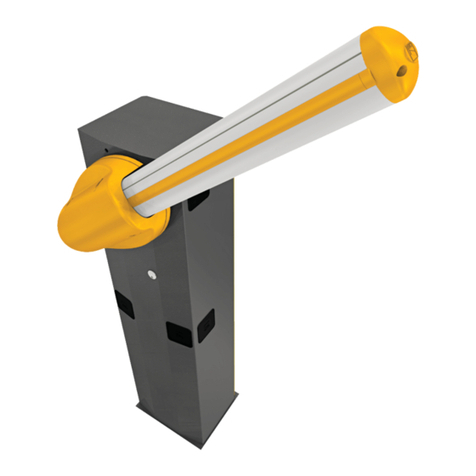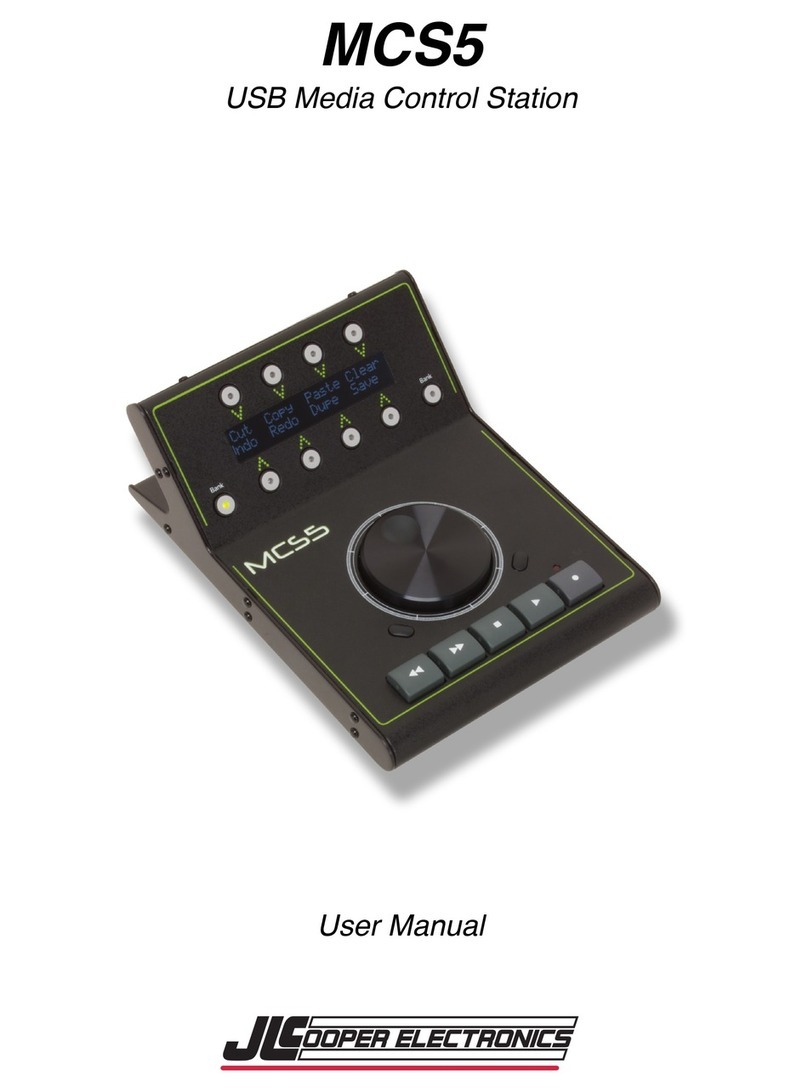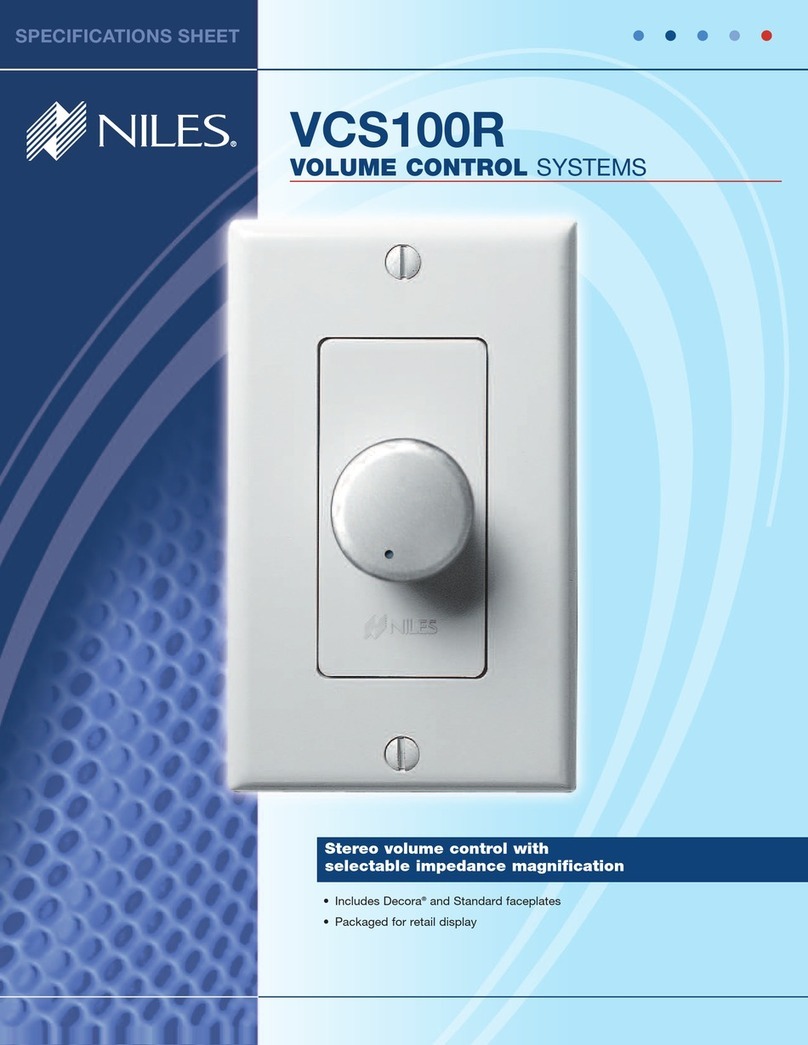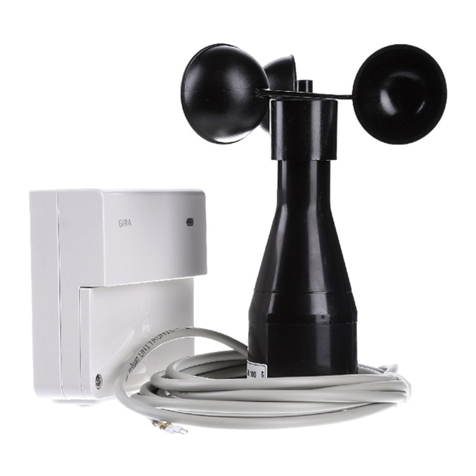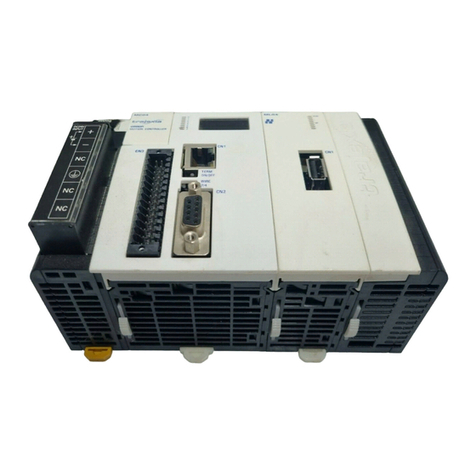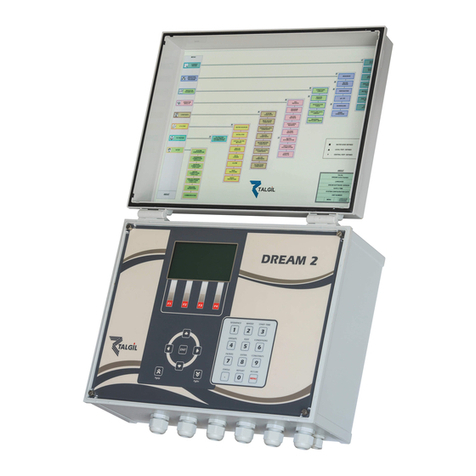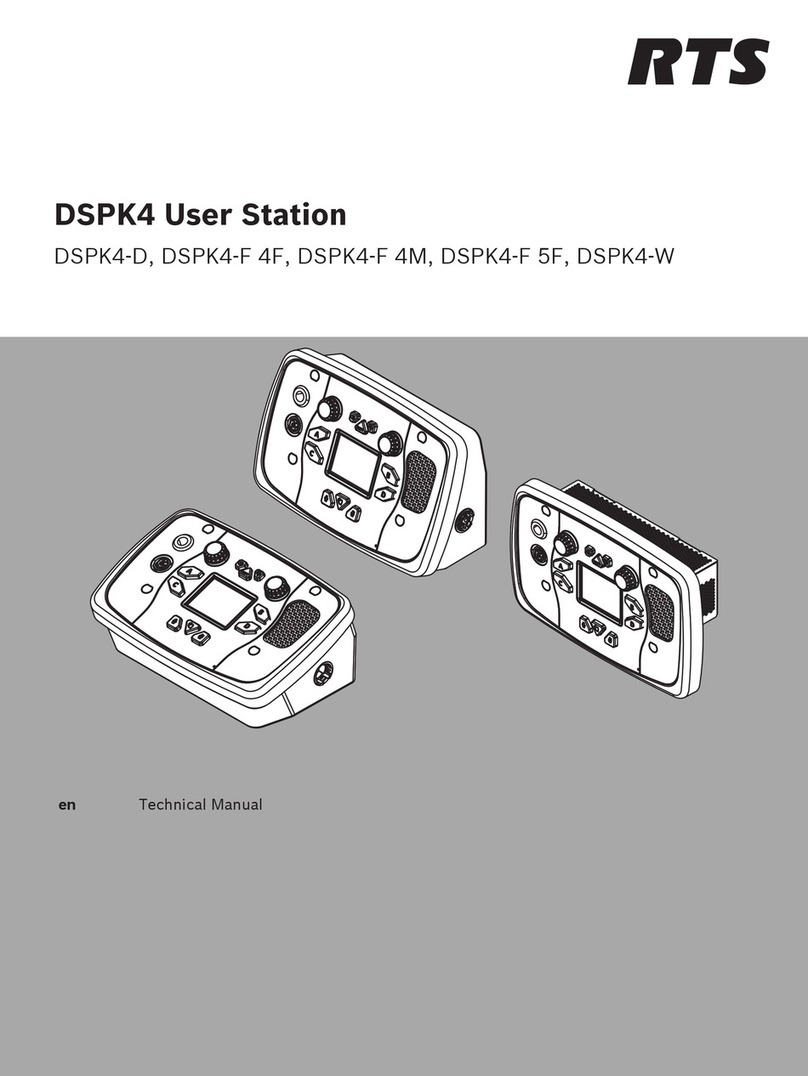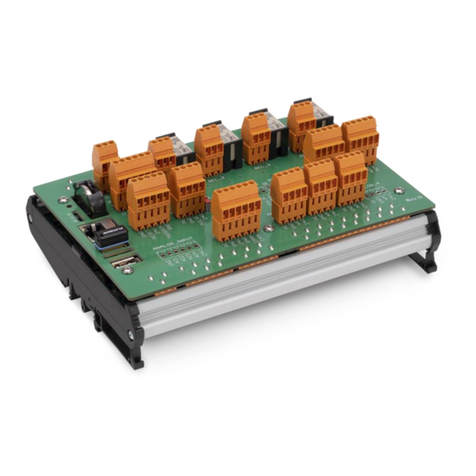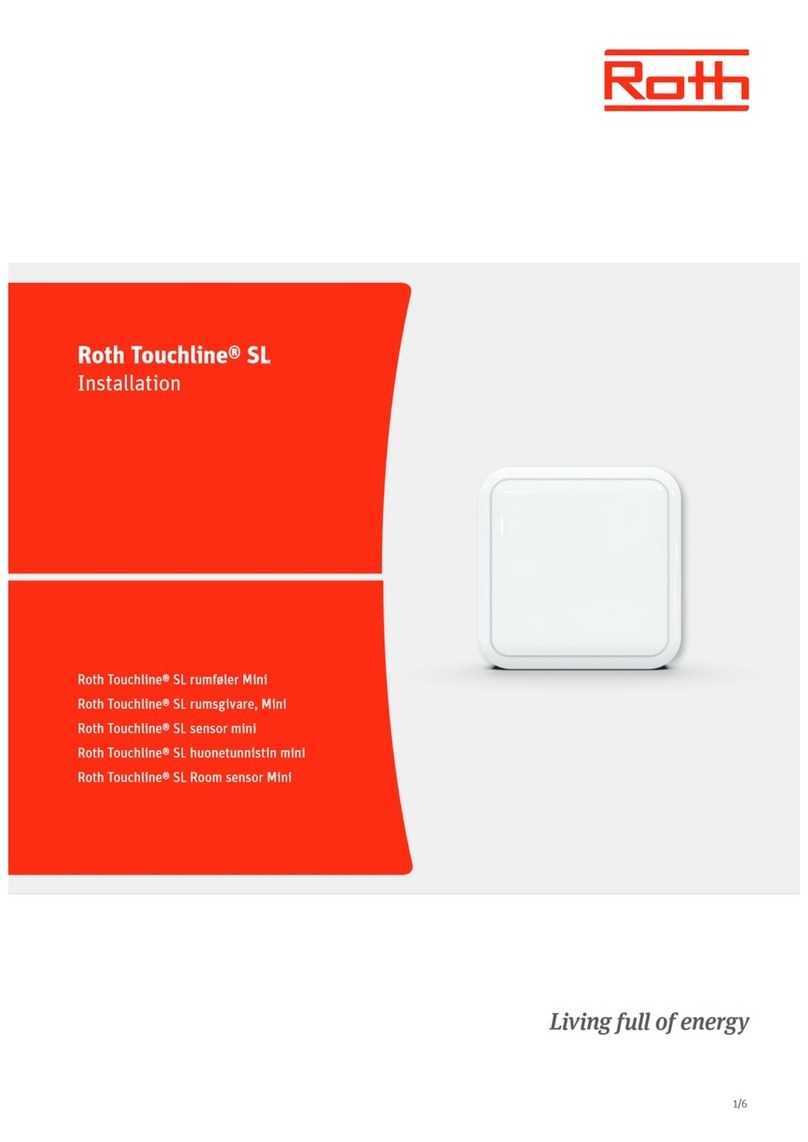energy sentry 9312 Service manual

Computerized Energy
Management
Model 9312
Owner’s/Installation Manual
Helping you to use energy
more efficiently

Table of Contents
Owner’s Manual
Notice to Users. . . . . . . . . . . . . . . . . . . . . . . . . . . . . . . . . . . . . . . . . . . . . . . . . . . . . . . . . . . . . . . . . . . . . . . . . . . . . . . . . . . . . . . . . . . . . . . . . . . . . . . . . . . . . . . . . . . . . . . . . . . . . . ....... 1
9312 Quick Start Guide ....................................................................................................................... 2
Introduction and Overview of the 9312............................................................................................... 3
Superior Features of the 9312. . . . . . . . . . . . . . . . . . . . . . . . . . . . . . . . . . . . . . . . . . . . . . . . . . . . . . . . . . . . . . . . . . . . . . . . . . . . . . . . . . . . . . . . . . . . . . . . . . . . . . . . . . . . . . 5
System Description .............................................................................................................................. 6
System Operation. . . . . . . . . . . . . . . . . . . . . . . . . . . . . . . . . . . . . . . . . . . . . . . . . . . . . . . . . . . . . . . . . . . . . . . . . . . . . . . . . . . . . . . . . . . . . . . . . . . . . . . . . . . . . . . . . . . . . . . . . . . . . . ... 7
Basic Operation. . . . . . . . . . . . . . . . . . . . . . . . . . . . . . . . . . . . . . . . . . . . . . . . . . . . . . . . . . . . . . . . . . . . . . . . . . . . . . . . . . . . . . . . . . . . . . . . . . . . . . . . . . . . . . . . . . . . . . . . . . . . . . ...... 8
Display/Settings Sequence................................................................................................................... 9
Load Control Strategies & Load Shedding Sequence.......................................................................... 9
Control of Clothes Dryer ................................................................................................................... 10
Systems Test. . . . . . . . . . . . . . . . . . . . . . . . . . . . . . . . . . . . . . . . . . . . . . . . . . . . . . . . . . . . . . . . . . . . . . . . . . . . . . . . . . . . . . . . . . . . . . . . . . . . . . . . . . . . . . . . . . . . . . . . . . . . . . ..........11
Hints for Maximum Savings. . . . . . . . . . . . . . . . . . . . . . . . . . . . . . . . . . . . . . . . . . . . . . . . . . . . . . . . . . . . . . . . . . . . . . . . . . . . . . . . . . . . . . . . . . . . . . . . . . . . . . . . . . . . . . . 11
Service Of Heating/Air Conditioning, Water Heater & Clothes Dryer ..............................................11
If You Need Service . .. . .. .. . .. . .. .. . .. . .. .. . .. . .. .. . .. . .. .. . .. . .. . .. .. . .. . .. .. . .. . .. .. . .. . .. .. . .. . .. .. . .. . .. . .. .. . .. . .. .. . .. . .. .. . .. . .. .. . .. . .. 11
Appendix A: Glossary........................................................................................................................ 12
Appendix B: 9312 Display Settings & Program Sequence ............................................................... 13
Installation Manual
1.0 Introduction ............................................................................................................................ 1 7
2.0 Tools & Materials Required ................................................................................................... 1 7
3.0 Pre-Installation System Check List ........................................................................................ 1 7
4.0 Locating C/D Unit .................................................................................................................. 1 8
5.0 Locating and Mounting Relay Unit. . . . . . . . . . . . . . . . . . . . . . . . . . . . . . . . . . . . . . . . . . . . . . . . . . . . . . . . . . . . . . . . . . . . . . . . . . . . . . . . . . . . . . . . 1 8
6.0 Running Control Cable. . . . . . . . . . . . . . . . . . . . . . . . . . . . . . . . . . . . . . . . . . . . . . . . . . . . . . . . . . . . . . . . . . . . . . . . . . . . . . . . . . . . . . . . . . . . . . . . . . . . . . . . . . . 1 9
7.0 Wiring Control Cable to C/D Unit. . . . . . . . . . . . . . . . . . . . . . . . . . . . . . . . . . . . . . . . . . . . . . . . . . . . . . . . . . . . . . . . . . . . . . . . . . . . . . . . . . . . . . . . . . 1 9
8.0 Mounting C/D Unit. . . . . . . . . . . . . . . . . . . . . . . . . . . . . . . . . . . . . . . . . . . . . . . . . . . . . . . . . . . . . . . . . . . . . . . . . . . . . . . . . . . . . . . . . . . . . . . . . . . . . . . . . . . . . . . . . 2 0
9.0 Wiring Control Cable to Relay Unit. . . . . . . . . . . . . . . . . . . . . . . . . . . . . . . . . . . . . . . . . . . . . . . . . . . . . . . . . . . . . . . . . . . . . . . . . . . . . . . . . . . . . . . 2 0
10.0 Wiring 120 VAC Power Supply to Relay Unit . . . . . . . . . . . . . . . . . . . . . . . . . . . . . . . . . . . . . . . . . . . . . . . . . . . . . . . . . . . . . . . . . . . . . . 2 1
11.0 Installing & Wiring Current Transformers ............................................................................. 2 1
12.0 Creating a Load Schedule & Making Load Assignments . . . . . . . . . . . . . . . . . . . . . . . . . . . . . . . . . . . . . . . . . . . . . . . . . . . . . . 2 2
13.0 Wiring Power Relays to Heat Circuits & Hot Water Heater .................................................. 2 3
14.0 Wiring Power Relays to Dryer ............................................................................................... 2 3
15.0 Wiring Low-Voltage Relays to Heat Pumps & Air Conditioners. . . . . . . . . . . . . . . . . . . . . . . . . . . . . . . . . . . . . . . . . . . 2 4
16.0 Connecting the 9312 to an Electric Furnace. . . . . . . . . . . . . . . . . . . . . . . . . . . . . . . . . . . . . . . . . . . . . . . . . . . . . . . . . . . . . . . . . . . . . . . . . . . 2 4
17.0 System Check-Out. . . . . . . . . . . . . . . . . . . . . . . . . . . . . . . . . . . . . . . . . . . . . . . . . . . . . . . . . . . . . . . . . . . . . . . . . . . . . . . . . . . . . . . . . . . . . . . . . . . . . . . . . . . . . . . . . . 2 5
18.0 System Programming ............................................................................................................. 2 6
19.0 Wrap-Up ................................................................................................................................. 2 6
20.0 Required Warranty Information and Record of Settings ........................................................ 2 7

Model 9312
Owner’s/Installation Manual
P/N 09312-94100C
Rev. 9/1/2009
© 2007 Brayden Automation Corporation
Brayden Automation Corporation
6230 Aviation Circle
Loveland, CO 80538
PHONE (970) 461-9600
FAX (970) 461-9605
www.brayden.com
WARNING:
Energy Sentry® Demand Management Systems are required to be installed by a duly licensed and qualified electrician
or electrical contractor, who is appropriately licensed in the jurisdiction where the demand management system will be
installed.
Notice to Users
This equipment generates and uses radio frequency energy and if not installed and used properly, that is, in strict accor-
dance with the manufacturer’s instructions, it may cause interference to radio and television reception. It has been type
tested and found to comply with the limits for a Class B computing device in accordance with the specifications in
Subpart J of Part 15 of FCC Rules, which are designed to provide reasonable protection against such interference in a
residential installation. However, there is no guarantee that interference will not occur in a particular installation. If this
equipment does cause interference to radio or television reception, which can be determined by turning the equipment
off and on, the user is encouraged to try to correct the interference by one or more of the following measures:
1. Reorient the receiving antenna.
2. Relocate the computer with respect to the receiver.
3. Move the computer away from the receiver.
4. Plug the computer into a different outlet so that computer and receiver are on different branch circuits.
If necessary, the user should consult the dealer or an experienced radio/television technician for additional suggestions.
The user may find the following booklet prepared by the Federal Communications Commission helpful: “How to Iden-
tify and Resolve Radio-TV Interference Problems.” This booklet is available from the U.S. Government Printing Office,
Washington D.C. 20402, Stock No. 0004-0000-00345-4.
1

9312 Quick Start Guide
2
How to Decrease
Your Electric Bill (and
Increase Your Savings)
Open the keyboard door of the 9312 Control/Display
Unit and press the Display Mode key until the left display
reads “dL”. This is your demand limit. Press the Demand
Limit and Decrease keys simultaneously to lower the
demand limit by 1 or 2 KW, depending on how much you
wish to save.
You may wish to double-check that the clock on your
9312 matches the clock setting on the meter. To do this,
press the Display Mode key until the left display reads
“CL” for “Clock”. Compare the time setting on the 9312
with the time shown on your electric meter. If a change
is necessary, press the Increase or Decrease key until the
time is correct.
How to Increase the
Comfort of Your Home
(and Increase Your
Electric Bill)
Open the keyboard door of the 9312 Control/Display
Unit and press the Display Mode key until the left display
reads “dL”. This is your demand limit. Simultaneously
press the Demand Limit and Increase keys and raise the
system’s demand limit by 0.5 KW.
Wait one or two hours to give your home a chance
to heat or cool. If the change you just made does not feel
sufficient after that time, press the Demand Limit and
Increase key to increase the system’s demand limit another
0.5 KW. Repeat until satisfied. Remember, for each KW
that you increase the demand limit, it costs you additional
money on your electric bill. Turn off all non-critical loads
in your home to make more power available for heating
or cooling.
Before you close the keyboard door, you may wish
to double-check that the clock on your 9312 matches the
clock setting on the meter. To do this, press the Display
Mode key until the left display reads “CL” for “Clock”.
Compare the time setting on the 9312 with the time shown
on your electric meter.
If a change is necessary, press the Increase or Decrease
key until the time is correct.
See System Operation on page 7 for a more detailed
explanation.

Introduction andOverview of the 9312
Figure 1: Load Profile - Owners A and B
3
Congratulations on your decision to purchase the
Energy Sentry 9312 Demand Management System. As the
owner of a home metered under the Time-Of-Use (TOU)
Demand Billing Rate, you fall into a special group of
consumers who can lower their monthly electric bills by
reducing energy demand peaks and shifting energy usage
to Off-Peak times. The Energy Sentry 9312 Demand Man-
agement System enables you to reduce these peaks while
maintaining efficient use of energy. Your decision to pur-
chase a 9312 represents a sound and intelligent investment
which will repay you over the years to come in reduced
electric bills, added convenience and peace of mind. The
9312 is the most advanced, user-friendly, and simplest to
use demand management system on the market today.
The Time-Of-Use (TOU)
Demand Billing Rate
Under the Energy (or flat)rate, you
are billed for total
energy used per month (total kilowatt-hour use)regardless of
how or when you use this energy. Owner A in Figure 1 illus-
trates a typical daily energy use pattern. Notice the demand
peaks in the morning and evening. Under the Energy Rate,
these peaks do not affect Owner A’s bill since he or she pays
for the total Kwh use only.
Utility companies are concerned about these demand
peaks since they increase the costs of supplying electricity
to their customers. As a result, they have devised the TOU
Demand Billing Rate, which is a preferred rate, to reward
customers who control their peak usage of electricity in
On-Peak times. Billing under the TOU Demand Rate works
like this: Suppose you are heating or cooling your home,
washing dishes, drying clothes and cooking a meal all at the
same time. Chances are your home is at peak energy usage or
drawing electricity from the electric company at or near the
maximum rate. This peak energy usage is illustrated by the
largest spike in Owner A in Figure 1.
Under the TOU Demand Rate, you pay for both total
energy used (in Kwh like the Energy Rate)and for your peak
demand during the On-Peak time over the billing period
(highest average KW demand -see page 12 for definition).
In addition, utilities offer reduced or no KW demand charges
during the Off-Peak times.
When compared to the Energy Rate, the TOU Demand
Rate offers a much lower charge for total Kwh used.
However, since there is also a demand charge for the peak
demand during the billing period, the savings could be
offset if this demand peak is high.
Now let’s look at Owner B in Figure 1. In this case,
Owner B is billed under the TOU Demand Rate. This
person has controlled his or her peak demand during the
On-Peak time and has consequently reduced the demand
charge. The result will be a lower electric bill for using the
same amount of electricity as Owner A. The key to Owner
B’s savings is in controlling the average energy usage by
leveling the peak demand during the utility’s On-Peak
time.
Different Meters
TOU Demand Rates require a special electric meter
which records not only the total energy (Kwh) consumed,
just like the standard watt-hour meter, but also records the
peak demand by tracking the energy usage over a 15, 30,
or 60-minute demand interval, set by your utility company.
Please contact your utility company to find the length of
your demand interval. Once this demand peak is registered
on the meter, a corresponding demand charge results, even
if this peak occurred only once during the billing period.
In addition, a special TOU demand meter keeps track
of the On-Peak and Off-Peak demand and the On-Peak
and Off-Peak kilowatt-hour usage. Depending on the way
your utility’s TOU Demand Rate is structured, your meter
may or may not record Off-Peak demand, thus you may
19
15
10
5
12am 1 2 3 4 5 6 7 8 9 10 11 12pm 1 2 3 4 5 6 7 8 9 10 11 12
kW DEMAND
TIME
OFF PEAK
OFF PEAK
ON PEAK
CONTROL PERIOD
9AM TO 9PM
OWNER A
ENERGY USE-UNCONTROLLED
OWNER B
ENERGY USE-CONTROLLED
TIME OF DEMAND RATE

4
or may not be billed for Off-Peak demand. On-Peak times
vary from utility to utility;as well as, by season.
To benefit from your Energy Sentry 9312 Demand
Management System you must have a demand measuring
electric meter equipped with the TOU/Demand option and
be billed on a TOU Demand Rate from your utility. Obtain
a rate booklet or rate sheet from your utility company that
describes your electric rate, the KW charges, On-Peak and
Off-Peak hours, and how to read your electric meter. We
recommend that you read your metered demand on the day
prior to when the meter is read by the power company, to
verify that your setting matches the meter’s reading.
Where the 9312
Technology Comes In
You wouldn’t need a 9312 to take advantage of TOU
Demand Rates if you could go through your home and
continuously turn off heating or cooling circuits and major
appliances to level out peak demand whenever necessary.
But remember, one slip in any one demand interval and
your utility bill would reflect a high demand charge.
The 9312 takes over this difficult, continuous burden
for you. The 9312 is one of the most sophisticated products
available for controlling peak demand. When properly
used, it can result in average monthly savings of up to 35%
and as much as 50%during heavy-use months. The sole
purpose of the 9312 is to efficiently allocate the usage of
electricity to electrical loads so that demand peaks are kept
below the level which you have set.
How the 9312 Works
The 9312 contains a microcomputer which turns
certain circuits off when necessary to keep your home’s
peak demand below a limit that you preset. Not all circuits
need to be controlled by the 9312. Circuits controlled
usually include the air conditioning, all heating zones,
the dryer, the water heater, or any other load with some
thermal storage capacity or “thermal inertia”.
In a typical all-electric home, the winter morning
routine may involve turning up some thermostats, operat-
ing the range, water heater and other appliances. Normally,
operation of these loads causes a morning peak (such as
that illustrated in Figure 1)which registers on the demand
meter. In the summer, a typical routine might include the
water heater cycling on and off as needed, operating the
range and later in the morning or early afternoon running
the air conditioner or cooling systems in your home. In
this case, these loads might cause an afternoon or evening
peak. In both cases, the peak demand used by your home
is caused by your use of electricity due to the season or
weather;as well as other normal non-weather related uses
of electricity.
Now, let’s put the 9312 to work. The start time of the
On-Peak period has just passed. The 9312 measures the
amount of power being used by the home as you go about
your daily business and it recognizes when the demand
limit is about to be exceeded. It waits a few minutes to see
if these loads are going to turn off by themselves while it
carefully calculates the average demand of the home. If
the power consumption continues to exceed the demand
limit, it begins to turn off loads. It turns off the least impor-
tant load first, using the load control strategy that you set.
As the power consumption drops, it then allows the most
important loads to come back on first. There are several
optional load control strategies. A typical strategy might
provide power to a higher priority load such as the dryer
and cut back on the heating or cooling loads in one or more
rooms, or the water heater while the higher priority load is
on. When the dryer turns off, the power it had been using is
channeled back to the room heating or cooling, thus main-
taining comfort but reducing peak demand. The end result
is that while you have still used about the same amount of
energy normally called upon by your lifestyle, this usage
has been leveled out to reduce the On-Peak demand. This
is illustrated by Owner B in Figure 1.
How the 9312 Saves
Now that we’ve examined how the 9312 enables
you to use the energy you are accustomed to, but spreads
this usage out by turning off non-critical loads for short
periods of time, let’s look at how this saves you money.
Remember, the utility company helps you save by offering
the TOU Demand Rate which is a lower rate per unit of
total energy consumed (Kwh). You can save money under
this rate if you control your peak energy usage to keep the
corresponding demand charge low.
The following hypothetical examples illustrate how
the Energy Sentry 9312 helps you save. Three cases are
presented for a single residence. In all three cases the total
energy consumption is the same. The differences are in the
utility rate structure and whether or not an Energy Sentry
9312 is installed.
Case I is an all-electric home billed under the Energy
Rate. This differs from the Demand Rate, in that there is
a higher charge for total energy used and no charge for
demand. Most homes not under the TOU Demand Rate
are billed under the Energy Rate. Table 1 on the next page
shows a monthly energy use of 3000 Kwh. Although rates
vary from utility to utility, the electric bill based on an
actual utility rate sheet for this energy usage level would
be $218.28.*
Case II is the same all-electric home billed under
the TOU Demand Rate. This rate is structured such that
11:00 AM to 10:00 PM Monday through Friday is the
On-Peak time during the summer schedule. The remain-
ing 13 hours from 10:00 PM to 11:00 AM and weekends
are the Off-Peak time when customers are not billed for
Off-Peak demand. For example, let’s assume that the
energy usage remains at 3000 Kwh for the billing period
and that 750 Kwh were used in the On-Peak times and the
remaining 2250 Kwh were used during Off-Peak times.
In this case, peak energy usage plays an important part in
determining the total bill. Although energy use peaks will
vary from month-to-month, a typical value for a high-use
month might be 19 KW. Based on a total usage of 3000
Kwh, the electric bill based on actual utility rates would
be $201.54**. Compared to Case I (the standard Energy
Rate), use of the TOU Demand Rate results in savings of
approximately 8%for the same energy usage. The demand
charge for the high peak demand during the On-Peak time

Table I - Customer Bill Comparison
Case I Case II Case III
Uncontrolled All-Electric Uncontrolled All-Electric Energy Sentry Controlled
Home-Energy Rate Home-TOU Demand All-Electric Home-TOU
Billing Rate (summer)Demand Billing Rate (summer)
Energy Use 3000 Kwh 3000 Kwh 3000 Kwh
per month
Peak Demand N/A 19 KW 5 KW
during month
Electric Bill $218.28 $201.54$112.23
Savings over $16.74$106.05
Energy Rate (7.7%) (48.5%)
Savings over
Uncontrolled $89.31
TOU Demand Rate (44.3%)
*Based on Virginia Power Company rate Schedule 1 Energy rate, effective January 1, 2007. Does not include taxes, miscellaneous
charges, fees, or adjustments.
** Based on Virginia Power Company Summer rate Schedule 1S TOU-Demand rate, effective January 1, 2007. Does not include
taxes, miscellaneous charges, fees, or adjustments.
5
offsets most of the savings on energy costs. Only On-Peak
demand is measured and billed under this rate.
Case III again uses the same all-electric home billed
under the TOU Demand Rate. The energy usage is 3000
Kwh which is the same as Case I and Case II. Let’s assume
that 750 Kwh were used in the On-Peak times and 2250
Kwh were used during Off-Peak times. Let’s assume that
an Energy Sentry 9312 Demand Management System is
installed and that the On-Peak demand limit set by the
homeowner is 5 KW. Let’s also assume that the Off-Peak
demand is not used for billing purposes. Based on this
peak demand and energy consumption, the electric bill
is reduced to $112.23**. This means a savings of 48.5%
over the standard Energy Rate in Case I and a savings of
44.3%over the uncontrolled TOU Demand Rate in Case II.
Installing an Energy Sentry 9312 could result in a savings
of up to 50%of your monthly utility bill during the heavy
use months with an average annual savings of 35%. The
added bonus is that you don’t have to reduce your overall
consumption to save. Rather, just let your Energy Sentry
9312 level out your usage during On-Peak times.
Note: Depending on the application of the 9312, the
savings are based on the utility rates in effect, the On-Peak
and Off-Peak hours, the proportion of energy consumed
during On-Peak and Off-Peak times, and the demand limit.
Superior Features of
the 9312
Real-Time Control
The 9312 contains a real-time clock which allows the
demand management system to take advantage of TOU
Demand Rates available from some utilities and modify
the control strategy accordingly. This feature enhances the
money savings and comfort capabilities of the 9312. The
9312 automatically adjusts for changes in daylight-saving
time, holidays, and up to 4seasonal On-Peak/Off-Peak
time schedules.
Daylight-Saving Time
The daylight-saving time settings mentioned in the
next paragraph apply only to those 9312 Demand Manage-
ment Systems with Version 3.1 (or later)software.
The 9312 contains three specific daylight-saving time
programs. The system can be set for the pre-2007 daylight-
saving time schedule (where daylight-saving time begins
on the first Sunday in April and ends on the last Sunday
in October); the new daylight-saving time schedule which
was initiated in March 2007 (where daylight-saving time
begins on the second Sunday in March and ends on the first
Sunday in November); or it can be set to recognize NO
daylight-saving time schedule. The latter is helpful for cus-
tomers in areas that do not utilize daylight-saving time.
Deluxe Digital Display Capability
The 9312 incorporates a 6-digit display for clear
and simple user information presentation. It displays all
system settings and real-time measurements;as well as,
the current time. All system modes are displayed by easy-
to-read mnemonics, two letter symbols representing the
current information on the display. In addition, sixteen
LED indicators show the on/off status of each individual
control point. See Appendix B for a listing of all system
settings and displays.
8 or 16 Separate Control Points
High peak demands occur when many electrical loads
are used simultaneously. The 9312 can control up to 16
individual electric loads on eight separate control points
using one Relay Unit or it can control up to 32 individual
electric loads on 16 separate control points using two
Relay Units. The controlled appliances can be turned off
for brief periods of time with little or no interruption to

6
your lifestyle. These loads usually consist of heating or
cooling circuits, dryer heating elements and hot water
heaters. These loads represent 60%to 80%of your total
connected electrical load. With eight or sixteen separate
control points, the 9312 provides maximum utilization
of energy. That’s because the loads which are turned on
and off are smaller, permitting a more regular and even
demand level. This results in greater energy efficiency and
comfort.
Microcomputer for Maximum
Flexibility
Use of a microcomputer allows the 9312 to precisely
measure KW power demand and accurately compute and
control the average KW demand. In addition, by using a
microcomputer, the 9312 can be adapted to any user life-
style or load requirement by allowing unlimited flexibility
in choosing load control strategies, Minimum On/Off-
Times and other control system settings.
EEPROM Non-Volatile Memory for
Maximum Reliability
Energy Sentry’s EEPROM memory “remembers”
all system settings, even when power is lost to your unit.
In this way utility power interruptions do not affect the
settings in your 9312. The system’s 10-year non-volatile
memory retains settings for 10 years in absence of power,
and if power is lost, timekeeping continues for 10 years
ensuring that the system clock is always accurate.
Choice of Load Control Strategies
The choice of load control strategies, made possible
by the use of a microcomputer, offers unlimited flexibility
as to how loads may be controlled. This means the 9312
can be adapted to almost any application, requirement,
or lifestyle. You or your dealer can individually set the
priority of each controlled load to create the optimum load
control strategy for a particular home and lifestyle.
Minimum On/Off-Times to Protect
Heat Pumps and Air Conditioners
Loads
All control points of the 9312 can be programmed
with Minimum On and Off-Times, each variable from
zero to 20 minutes. This feature allows the 9312 to be used
with heat pump and air conditioning compressor loads by
providing time-delay protection.
Auto-Limit Function
The 9312’s Auto-Limit Function allows automatic
changes of the demand limit up to 12 times per year. You
may find this useful in changing their demand limit as
desired throughout the year to reflect the seasonal increases
or decreases in energy use. The Auto-Limit function helps
to automatically adjust for these changes so you don’t have
to remember to do it manually. You can override these
changes at any time;however, any previously set changes
will still remain in effect.
System Description
Your Energy Sentry 9312 Demand Management
System consists of three basic components: the Control/
Display Unit, Relay Unit(s)and the Current Transform-
ers. The System Diagram in Figure 3 in the Installation
Manual shows how these components are connected to
control loads at the circuit breaker panel. Your 9312 con-
trols only those loads which are connected to it. However
the total demand from all household loads are measured
continuously. These loads will vary depending on applica-
tion and should be listed in the space provided at the end
of this manual;as well as, on the keyboard label inside the
door of the Control/Display Unit. If you are in doubt as
to which loads are controlled, ask your electrician or the
authorized dealer who installed your 9312.
The basic function of your 9312 in controlling these
loads is to keep the total electrical demand below a peak
value set according to your desired level of comfort and
minimum load requirements. Each of the components
which make up the 9312 has a separate and unique func-
tion in accomplishing this task described below:
Control/Display Unit
The Control/Display Unit is located inside the home
usually in a convenient location like the family room,
kitchen, or main hallway. It is used to set or change system
settings and monitor system operation and contains an
audible alarm to indicate that the demand limit is about to
be exceeded. A 6-digit display provides system informa-
tion and the current time. There are 7 push-button keys
that control all functions of the display. By pressing a
key or a combination of keys, you can change the display
mode and program all system settings.
The Control/Display Unit is the “brain”of the 9312
and it contains a microcomputer which automatically
controls loads connected to the relays in the Relay Unit.
Commands to switch these loads originate here and are
based on the user-set demand limit and the actual demand
as measured by the Current Transformers. The loads
are switched based upon the load control strategies pro-
grammed into your unit according to your requirements.
These strategies will be discussed in more detail later.
Relay Unit
Either one or two Relay Units may be used with
the 9312. Each Relay Unit consists of up to eight power
switching relays. This unit is mounted next to the main
circuit breaker panel and contains the Data/Link PC Board
used in communicating with the Control/Display Unit. An
expanded system, one that has 16 power switching relays,
requires two Relay Units.
Current Transformers
Two Current Transformers (CT’s), usually mounted
inside the circuit breaker panel to monitor total electrical
usage. They tell the microcomputer in the Control/Display
Unit how much electricity your home is using for all loads,
not just those controlled by the 9312. By monitoring the
total usage, controlled loads may be turned on and off to
keep total demand below the limit you set.

7
System Operation
Figure 2 shows the front panel of the C/D Unit. Each
indicator and key serves a specific purpose in providing
you with the necessary information and control to mini-
mize peak energy usage. Each of these indicators and keys
have been numbered and are described below.
Mode Display (1): This two-digit indicator displays
the 9312’s mode which has been selected to be displayed
in the Mode display. Instantaneous demand (id), Average
demand (Ad), Peak demand (Pd), Demand Limit (dL)and
Clock (CL)modes are selected here. One of these modes is
selected at a time, by using the Display Mode key (12).
KW Demand/Time Display (2): This indicator dis-
plays the KW demand or time information depending on
the mode selected in the Mode Display (1)above.
AM Indicator (3): When the Clock (CL)mode is
selected in the Mode Display (1), the AM indicator lights
when all clock and time settings between midnight and
noon are shown in the KW Demand/Time Display (2).
PM Indicator (4): When the Clock (CL)mode is
selected in the Mode Display (1), the PM indicator lights
when all clock and time settings between noon and mid-
night are shown in the KW Demand/Time Display (2).
Reduce Load Indicator (5): The Reduce Load indi-
cator will come on and the alarm will sound (if the alarm is
turned on)when all controlled loads have been turned off
by the 9312, but demand is still approaching the demand
limit. When this occurs, you must either reduce the uncon-
trolled demand or increase the demand limit as suggested
in the operating instructions.
Circuit On Indicators (6): These indicators, when
lit, tell you which control points are enabled. A Circuit On
indication does not necessarily mean that the controlled
load is actually on, but can go on if the thermostat (or start
switch for the dryer)calls for it.
Decrease Key (7): This key operates in conjunction
with the Demand Limit key (9), Display Bright key (10),
and the Alarm Volume key (11)and is used to decrease the
functions controlled by these keys.
Increase Key (8): This key operates in conjunction
with the Demand Limit key (9), Display Bright key (10),
and the Alarm Volume key (11)and is used to increase the
functions controlled by these keys.
Demand Limit Key (9): This key is used to set the
demand limit and is used in conjunction with the Decrease
key (7)or Increase key (8)and allows you to adjust the
demand limit up or down to the level which best suits your
particular energy requirements. During Off-Peak times,
the On-Peak demand limit may be checked by simply
pressing this key from any display mode. The On-Peak
demand limit will be displayed in the KW Demand/Time
Display and may be adjusted up or down by also pressing
the Increase key (8)or Decrease key (7).
Figure 2: Control/Display (C/D) Unit

8
Display Brightness Key (10): This key is used to
adjust the display brightness and is used in conjunction
with the Decrease key (7)or Increase key (8)to set the
display brightness for the best visibility under existing
lighting conditions.
Alarm Volume Key (11): This key is used with the
Decrease key (7)or Increase key (8)to control the alarm
volume and allows you to adjust the volume to high,
medium, low or off to meet various sound conditions.
Display Mode Key (12): This key allows you to
select the display mode desired in the Mode display and
KW Demand/Time display windows. Each press of the key
rotates between Instantaneous, Average or Peak demand
limit and Clock modes.
Reset Peak Key (13): When in Peak demand mode,
this key allows you to reset the highest average (peak)
demand recorded since the last reset. This can be reset at
any time and is for owner information only.
Control Panel Instructions (14): These instructions,
printed on the Control/Display Unit, enable you to make
all appropriate demand control and time setting changes.
Circuit Assignments (15): This space is used to record
the loads controlled by each circuit of the 9312 and is filled
in using the information supplied by the installer or dealer
in the back of this manual.
Basic Operation
Your 9312 has been designed for ease of operation and
to provide efficient energy use. Please carefully read the
following instructions concerning basic system operation
as they will enable you to maximize efficient energy use
and minimize your electric bill.
Step 1, Turning On the Unit: Your 9312 should already
have been turned on by the installing electrician. If not,
there should be a circuit breaker in your circuit breaker
panel labeled “9312”or “Energy Sentry”. If this circuit
breaker is off, it should be turned on. If the circuit breaker
cannot be located, call the installing electrician.
Step 2, Setting Your Demand Limit: Please refer to the
Control/Display Unit pictured in Figure 2 for this and all
succeeding steps. To set demand limit:
1. Press and hold the Display key (12)until “dL”
shows in the Mode Display (1).
2. Press and hold the Demand Limit key (9).
3. Simultaneously press the Decrease key (7)or the
Increase key (8)until the desired demand limit is reached.
The numbers in the KW Demand/Time Display (2)will
count up or down as you push these buttons.
4. Release keys at the desired setting.
There is no single On-Peak demand setting that will
be suitable for everyone. The level of demand required to
satisfy comfort, economy, and convenience will vary with
the uniqueness of each house, its occupants’energy use,
and the utility’s averaging period.
To arrive at the best demand setting for you, requires
some trial and error (see Table 2). The 9312 has a demand
limit setting range of 2.0 to 49.5 KW in .5 KW increments.
A good starting demand limit is 5 KW. If you need more
energy to maintain comfort, increase the KW level by only
.5 KW. If, after an hour or two, this is not enough, increase
it by .5 KW again until you are comfortable. Don’t expect
instantaneous results. Thermal recovery of a home may
take several hours. However, you can help by turning off
all non-critical loads in your home. Once the demand limit
is increased, you will be billed a higher rate.
Note: Remember that once the meter registers peak
demand, it will not come down until it is reset to zero each
month by the meter reader. (See “Hints for Maximum
Savings”on page 11).
Because your are billed under a TOU Demand Rate,
you should change the KW Demand Limit on your Control/
Display Unit once a month or seasonally as appropriate.
Typical demand limit ranges, by month, for an average
all-electric home are listed in Table 2.
Table 2: Typical KW Values by Month
Summer Winter
Month (A/C) (Heating)
January 4-6 KW 7-10 KW
February 4-6 7-10
March 5-7 6-9
April 5-8 5-7
May 6-10 5-6
June 6-10 5-6
July 6-10 KW 5-6 KW
August 6-10 5-6
September 6-8 5-7
October 5-7 6-8
November 4-6 7-9
December 4-6 7-10
Step 3, Monitoring Your Actual Demand: To select
Instantaneous (id), Average (Ad)or Peak demand (Pd):
1. Press Display key (12)once for each display
change desired.
2. The Mode Display (1)will show which demand
mode is selected: Instantaneous demand (id), Average
demand (Ad), or Peak demand (Pd). As you scroll through
this Main Loop, you will also see the Demand Limit (dL)
and Clock (CL)displays.
Step 4, Reset Peak: This step is optional depending upon
the time interval for which a record of your highest average
(peak)is desired. To reset peak:
1. Press the Display key until the Mode Display
reads “Pd”for Peak demand (See Step 3).
2. Press and release the Peak Reset key (13). A zero
will briefly be displayed in the KW Demand/Time Display
(2). This value will then jump to the current average which
becomes your new peak. As the average increases, the
peak demand will also increase and be recorded.
Step 5, Adjusting Display Brightness: Display bright-
ness may vary with existing lighting conditions. Set as
follows:
1. Press and hold the Display Bright key (10).
2. Simultaneously press the Decrease key (7)or
the Increase key (8)until the desired intensity is reached.
3. Release keys at the desired display intensity.
Step 6, Adjusting Alarm Volume: Alarm volume may be
varied depending upon the desired alarm level as follows:

Display/Settings
Sequence
The 9312 contains 2 display sequence loops: the Main
Loop and the System (or Installation)Loop. The Main
Loop contains the following:
Instantaneous Demand
Average Demand
Peak Demand
Demand Limit
Clock
To step through the Main Loop, press the Display Mode
key (12)to change to next system setting in the loop.
The System Loop contains system information which
is usually set only when the 9312 is installed. All system
settings in the System Loop are listed in Appendix B. To
enter the System Loop from the Main Loop, hold down
Alarm Volume key (11)and Reset Peak key (13)simul-
taneously for 5 seconds. If settings are changed, the new
settings are automatically saved.
Load Control
Strategies & Load
Shedding Sequence
When your total power consumption starts to exceed
the demand limit setting, the 9312 turns off (sheds)the
lowest priority load which is available. If necessary,
additional loads will be shed to keep the average demand
below the demand limit setting. Loads are shed according
to the load control strategy selected: the fixed priority strat-
egy, the rotating strategy, a combination, or by the Priority
17 strategy. See Section 12 in the Installation Manual for
an explanation on how to select a load control strategy
described below:
Fixed Priority Strategy: When this strategy is
selected, up to sixteen circuits are turned on and off in
order of priority from 1 through 16, where loads controlled
by priority level 1 have the highest priority. Loads con-
trolled by priority level 16 are the first off and the last on.
The on and off decision is made and implemented every
1-minute. This strategy is useful when low priority loads
may be turned off without significantly interrupting energy
use needs. Minimum On and Off-Times may be assigned
to each circuit. Chart A shows an example of this strategy.
Rotate Strategy: For this strategy, all sixteen circuits
are assigned an equal but rotating priority, which turns off
loads sequentially every 1-minute as required to maintain
demand below the limit. The first load previously turned
off is turned on at the beginning of each 1-minute interval.
This way Off-Time of rotating loads is minimized.
The rotate strategy is particularly useful where equal
priority rotation may serve several heating loads, minimiz-
ing the Off-Time of each load during rotation. Thus, the
reduction in demand is shared by several loads and the
1. Press and hold Alarm Volume key (11).
2. Simultaneously press the Decrease key (7)or the
Increase key (8). The alarm will come on and beep about
6 times at each volume level.
3. Release keys at the desired volume.
Note: If you desire to turn off the alarm, hold down
the Alarm Volume key (11)and Decrease key (7)until the
alarm stops.
Step 7, If the Alarm Sounds: The alarm in your Control/
Display Unit sounds and the Reduce Load Indicator (6)
will come on when the 9312 has done all it can do to
reduce your electrical demand, but the actual demand is
still greater than the demand limit. That means all circuits
that your 9312 has control over have been turned off, but
due to high base load, this is not enough. In this situa-
tion, your demand limit may be unrealistically low for the
level of comfort or appliance use you desire. Loads with
Minimum On-Times may cause the alarm to temporarily
sound until the particular On-Time has elapsed.
To silence the alarm, turn off some unnecessary appli-
ances or, if necessary increase the demand limit 0.5 KW at
a time until the alarm stops. If you choose to turn off an
uncontrolled load, you may monitor your actual demand
in the Instantaneous mode in order to see the effect of each
load on overall demand (see Table 3).
Important: Only your uncontrolled loads or your
controlled loads currently under a Minimum On-Time
can initiate the over-limit alarm. Minimum On-Times are
described on page 14.
Table 3: Typical Residential Appliance Ratings
Stove
Large Burner 1.5-2KW
Small Burner 1-1.4KW
Oven or Broiler 5KW
Self Clean (Bake &
Broil on together)10KW
Refrigerator 1.5-2KW
Dryer 4.5-6KW
Freezer 1.5-2KW
Microwave 1.5KW
Water Heater 3-6KW
Lighting 0-1.4KW
Dishwasher 1.2KW
Waffle Iron 1.2KW
Toaster 1.1KW
Hair Dryer 2KW
Room Air Conditioner 0.9KW
Vacuum 0.7KW
Blender 0.3KW
Mixer 0.15KW
Television 0.12-0.2KW
(instant on is 0.3 KW
consumption continuously)
Central Air Conditioning 3-8KW
(depending on home size)
Heat Pump 3-25KW
9
id
Ad
Pd
dL
CL
id
Ad
Pd
dL
CL

Chart A - Heat Pump/Air Conditioner Home
Load Control Strategy: Fixed Priority
Control Point Priority Shed Sequence Load Load Size
1 1 (Highest)Last Dryer 5.5 KW
2 2 Seventh Compressor #1 3.0-7.0 KW
3 3 Sixth Compressor #2 3.0-7.0 KW
44Fifth Water Heater 4.5 KW
5 5 Fourth Strip Heat #1 5.0 KW
Elec. Furnace
6 6 Third Strip Heat #2 5.0 KW
Elec. Furnace
7 7 Second Strip Heat #3 5.0 KW
Elec. Furnace
8 8 (Lowest)First Strip Heat #4 5.0 KW
Elec. Furnace
Chart B - Baseboard Heated Home
Load Control Strategy: Combination Fixed/Rotate
Control Point # Priority Shed Sequence Load Demand
1 1 (Highest)Last Dryer 5.5 KW
2 2 Second Water Heater Heat 4.5 KW
3 3 (Lowest)* First*Living Room 3.5 KW
43 (Lowest)* First*Basement Heat 4.0 KW
5 3 (Lowest)* First*Entry Heat 1.5 KW
6 3 (Lowest)* First*Bedroom Heat 2.0 KW
7 3 (Lowest)* First*Bedroom Heat 2.0 KW
8 3 (Lowest)* First*Family Room Heat 3.0 KW
*Note: Shedding sequence of rotating loads begins with the load which has been restored the longest. When all #3
priority loads are all shed, the #2 priority load is shed next. The #1 priority load is shed last, if necessary.
desired comfort level is maintained throughout the home.
Minimum On and Off-Times, usually not required under
this strategy, may be assigned to each circuit if required.
Combination Strategies: Since the 9312 allows the
user to program an independent priority for each control
point, a virtually unlimited number of combination load
control strategies can be selected. One or more groups of
rotating loads, with or without fixed priority loads are pos-
sible. One combination is shown in Chart B.
In addition to these strategies, all circuits may be
assigned Minimum On and Off-Times variable up to 20
minutes. This is a particularly attractive feature because
heat pump and air conditioning compressors requiring
time delay switching may be controlled under a strategy to
best fit your application, lifestyle or use pattern.
The load shedding priority selected is based on the type
of heating and cooling equipment and the design of your
house. If desired, the priorities may be easily changed.
Priority #17: The 9312 allows the use of a special
strategy called Priority 17. If a control point is programmed
to Priority 17, the loads connected to that relay are held
off during On-Peak Times and run only during Off-Peak
Times. This works especially well for water heaters because
it moves them to a low cost time and prevents competition
between loads during the more expensive On-Peak Time.
10
Changing Load Control Strategies
When your 9312 was installed, the strategy most
appropriate to your existing load requirements was
selected. If your load requirements have since changed, or
if you would like to change your load control strategy, see
Section 12 or contact your dealer.
Control of Clothes
Dryer
The clothes dryer is usually one of the last circuits
the 9312 sheds. When the dryer is shed, the dryer motor
continues to tumble clothes. Only the heating element is
turned off during this brief period. This means that when
your demand limit is set at 5 or 6 KW and you are cooking
a large meal, the dryer will be shed when the oven is on
because the oven takes apx. 3 KW-4.5 KW. When the oven
is off, the dryer element is restored. This may result in
slightly longer drying times.
Note: If the dryer motor stops each time it is shed, it is
not properly wired to the 9312. Have your electrician make
the correction.
Caution: If you purchase a new dryer or if you move
into a home with a 9312 installed, your dryer may not work
properly. Since not all dryers are the same, the dryer wires
in the circuit breaker panel may need to be reversed.

11
Systems Test
To verify that the 9312 is measuring demand and shed-
ding loads properly, make the following test:
1. Turn off all household loads or as many as possible.
Leave the 9312 on. Note level of Instantaneous demand.
Make sure it is less than 2 KW.
2. Set the demand limit (dL)to 2 KW.
3. Look at the back of this manual or on the part of the
C/D United labeled Circuit Assignment to verify the number
of loads you have connected to your 9312. Whatever number
of loads you have connected, make sure that same number
of LED indicators are lit in red in the Circuit On Display.
Turn on oven and all top elements of your stove. Please
take all necessary precautions to prevent damage or injury
from the hot surfaces on the stove top. Do not leave elements
on more than the brief amount of time it takes to run this test.
4. The system will shed (turn off)all controlled loads.
This can be observed by watching the LED indicators
on the right side of the display. This may take just a few
minutes. The A/C may take longer to turn off if the unit is
programmed with a Minimum On-Time (maximum time
will be 20 minutes).
5. When all available loads have shed, the alarm will
sound indicating that your demand is still above 2 KW
because the stove and oven are still on. Turn off all stove
elements and oven. Once all loads have shed, the Instanta-
neous demand display (id)should drop to near zero.
6. Raise the demand limit (dL)to the maximum demand
setting. (Leave the demand limit at this level only long enough
to complete this test as a high peak demand may occur.)
7. Return the demand limit to your normal demand
setting once you see the loads beginning to restore.
8. All loads will restore according to the control
strategy and when Minimum Off-Times have elapsed (it
may take the A/C up to 20 minutes). This can be observed
by watching the enabled LED indicators. Instantaneous
demand will increase as each load is restored. If all steps
are completed, the 9312 is working properly.
Hints for Maximum
Savings
When the demand limit setting is to be decreased (i.e.
from 10 KW to 8 KW), the setting should be decreased
BEFORE your utility meter is read. In addition, when the
demand setting is to be increased (i.e. from 6 KW to 7
KW), the setting should be increased AFTER your utility
meter is read. Check past bills or call the utility company
directly to determine this date.
You can help increase the effectiveness of your 9312
by trying to avoid turning on two or more major appliances
at the same time (i.e. dry clothes at times when the range is
not in use). This will assist the 9312 in controlling demand
and it will increase the comfort level of your home.
Shifting use of all loads possible to Off-Peak times
will help to reduce your On-Peak energy usage charge
and increase your savings. In most TOU Demand Rates,
the On-Peak demand and energy charges are substantially
more costly than the Off-Peak charges. Consult your utility
to determine your On and Off-Peak times.
Service of Heating/Air
Conditioning, Water
Heater & Clothes Dryer
When technicians service any electrical equipment
that is controlled by the 9312, they should be advised that
you have a demand management system. They should
also be warned NOT to disconnect the 9312 wiring or
its circuit breaker off. Otherwise, they may disable your
9312 which could result in a very high electric bill.If
your 9312 is turned off by service technicians, avoid using
heating/cooling systems, the dryer and water heater until
power to the demand management system is restored.
The Energy Sentry 9312 cannot cause damage or pre-
mature failure of the equipment when it is installed and set
correctly. Nor can it cause a higher electric bill than you
would have had without a demand management system.
When the power to the 9312 is off at the circuit breaker
panel, power will be available to all controlled loads. Without
power, the 9312 cannot control your demand. This is why
the power must be restored to the 9312 after a service call.
If You Need Service
Your Energy Sentry 9312 has been carefully assem-
bled and tested at the factory. Only components having
a high degree of reliability and long life have been used
in its manufacture. In the event that a failure does occur,
your 9312 has been designed so household appliances
and loads will continue to function. The only difference
is that there will be no demand control, and high demand
peaks can occur. If a malfunction should occur, you may
turn off the 9312 at the circuit breaker labeled “9312”or
“Energy Sentry,”located in the circuit breaker panel. Yo u
may control your demand manually, if desired, to avoid
unnecessary demand peaks as follows:
1. Heat or cool only those rooms which are occupied
by keeping the thermostat set appropriately only while you
are in each room.
2. When cooking meals, all heating or cooling zones,
as well as the water heater and dryer should be turned off.
3. Avoid using appliances simultaneously. For
example, do not use the dryer, water heater and range at
the same time.
4. You may monitor your highest demand peak on
the utility meter to determine the effectiveness of manual
control.
5. Since there are no user serviceable parts or compo-
nents in the 9312, refer all service to the authorized Energy
Sentry dealer as described in the Warranty. You can log on
to our website www.brayden.com/dealerinfo.html to find
a dealer near you.

Appendix A — Glossary
12
The following terms are used throughout this manual
They are defined here to assist you in understanding their
meaning and use.
Average Demand: The average rate of electric usage
during the demand averaging period. The average demand
is calculated by dividing the total number of kilowatt-hours
used by the number of hours in the averaging period. For
example, if 2 Kwh’s were used during an averaging period
of 15 minutes, the average demand would equal 2 divided
by .25 (15 minutes)or 8 KW.
Averaging Period: An interval of 15, 30 or 60 minutes
over which the average demand is calculated. The 9312
should be set to the same averaging period as the utility’s
demand meter. (Same as Demand Interval)
Customer Charge: A flat charge on an energy bill
used to help the utility company recover fixed costs
associated with serving a customer. It is independent of
the demand or consumption of the energy provided. Also
called monthly service charge or basic charge.
Declining Block Rate: A method of charging for elec-
tric service used by electric utilities based on total energy
consumed (Kwh)and cost per Kwh. The cost per Kwh is
usually reduced in steps as total Kwh use increases.
Demand: The rate of usage of electrical power,
expressed in KW (or kilowatts).
Demand Rate: A method of charging for electric
service where the cost of electricity used is based on both
total energy consumed (Kwh)and peak demand (KW).
Demand Charge: A charge that recovers some
of the utility’s capital and operating costs based on the
customer’s highest average use during the billing period. It
appears on an electric bill, along with the customer charge
and the energy charge.
Demand Interval: Same as Averaging Period (see
above).
Demand Limit: The set point, expressed in KW, is
the maximum energy is allowed to be consumed. As this
limit is approached, the Energy Sentry begins shutting off
pre-determined loads to control peak demand.
Demand Meter: A utility meter which measures
both total energy consumed in Kwh and the highest peak
demand in KW.
Energy Charge: This charge is for the energy con-
sumed during the billing period. It appears on the electric
bill, along with the customer charge and the demand
charge.
Energy Rate: A method of charging for electric
service where the cost of electricity is based only on Kwh
consumption multiplied by a fixed cost per Kwh. Cost per
Kwh remains the same regardless of the number of Kwh’s
used. Also called Flat Rate. Under this rate, demand is not
measured, recorded, or billed.
Instantaneous Demand: The electricity in kilowatts
currently being drawn by the electrical service of a build-
ing at any instant in time.
Kilowatt (KW): 1,000 watts.
Kilowatt Hour (Kwh): The basic measurement of
electric energy consumption as metered by the electric
utility. (If you were to turn on ten 100 watt lights for one
hour, you would have consumed one kilowatt hour of
electrical energy.)
Load: The amount of electricity required by a particu-
lar energy consuming device or group of devices. Usually
expressed in watts or kilowatts.
Minimum Off-Time: The minimum time that a
control point must be shut off before it can be restored by
the 9312. The Minimum Off-Time can be set from 0 to
20 minutes. Any control point having a heat pump or air
conditioner compressor or other motor load connected to
it should have a Minimum Off-Time of at least 4minutes.
Resistive loads should not have Minimum Off-Times.
Minimum On-Time: The minimum time that a control
point must be restored before it can be shed by the 9312.
The Minimum On-Time can be set from 0 to 20 minutes.
Any control point having a heat pump or air conditioner
compressor or other motor load connected to it should
have a Minimum On-Time of at least 5 minutes.
Peak Demand: The highest usage in any demand
interval within the billing period.
Priority: The relative importance of each controlled
load to all other controlled loads, as assigned in the 9312.
As the demand approaches the demand limit, the 9312
uses the priority of each load to determine which load(s)
to shed first. A load with a priority of “1”is the highest
priority and is shed last and restored first. A load with a
priority of “8”is the lowest priority and is shed first and
restored last. Loads of equal priority will rotate being shed
and restored.
Time-Of-Use Demand Rate: A method of charging
for electric service used by electric utilities which charges
a higher price for Kwh’s used in On-Peak periods, and a
lower price for Kwh’s used in the Off-Peak periods. The
demand peak is usually monitored and recorded only in the
On-Peak periods. The cost of electricity is based on both
total energy consumed (Kwh)and demand peak (KW).
Depending on the particular utility and rate, one or more
On-Peak periods, varying in length, may exist during a 24
hour period.
Watt: A measure of electrical power or rate of doing
work. It is analogous to horsepower where one horsepower
is equivalent to approximately 746 watts.

Appendix B — 9312 Display
Settings & Program Sequence
13
Explanation of Main
Loop Display Modes
This applies 9312’s with Version 3.3 or later software.
Instantaneous Demand (id): The current demand pres-
ently being drawn by the electrical service of the home or
building. This is useful for determining how much energy
is required to operate various loads so that an understand-
ing of your energy requirements may be achieved. Yo u r
actual demand may be compared to the typical residential
appliance rates given in Table 3 on page 9.
Average Demand (Ad): The average demand which has
accrued over the last 15, 30 or 60-minute interval, as set by
the averaging period “AP”in system programming mode
of the 9312. This should be the same as the averaging
period of the utility’s demand meter.
Peak Demand (Pd): The interval with the highest average
demand (Ad)which has occurred (since last reset)during
the On-Peak periods. This is the demand level which
has been set on the electric meter and consequently, the
demand that you will be billed for. To reset, set the 9312
to “Pd”mode and press the Reset Peak key. This indicator
is intended to allow you to monitor your daily or weekly
peaks in order to gain an understanding of how and when
these peaks occur. In this way, energy use patterns may be
modified, if desired, to minimize these peaks.
On-Peak Demand Limit (dL): The current demand limit
which is in effect. Adjustable from 2.0 KW to 49.5 KW in
the 40 KW demand range (4 KW to 99 KW in the 80 KW
demand range -- see demand ranges on Page 14). During
the On-Peak period(s), the On-Peak demand limit will
be displayed, and can be changed. During the Off-Peak
periods, the Off-Peak demand will be displayed. While
Off-Peak, the On-Peak demand limit can be viewed by
simply pushing the demand limit key. The On-Peak limit
must be less than the Off-Peak limit.
Clock (CL): The current time between midnight (12:00
AM)and 11:59 PM of the next night. “AM”and “PM”
LEDs indicate appropriate time of day.
Explanation of System
Loop Display Modes
To enter System Loop, press the Alarm Volume and
Reset Peak keys for 5 seconds. The display will change
to the first System Loop setting: dE. To move to the next
mode, press the Demand Limit key. Use the Increase or
Decrease keys to change the current mode’s value. To
escape from the System Loop at any time, press Display
Mode key. If no keys are pressed within 2 minutes, the
display will automatically return to the Main Loop.
To enter the Auto-Limit Loop, you must first be in the
System Loop in any mode except “dr”. Push the Alarm
Volume and Reset Peak keys again until the first setting
“d1”is displayed. Release keys.
Temperature (dE): The current temperature, in (dE)grees
Fahrenheit, inside the 9312’s C/D Unit.
Day of Week (do): The current day of the week. 1=Sunday,
2=Monday, 3=Tuesday, 4=Wednesday, 5=Thursday,
6=Friday, 7=Saturday.
Date (Month & Day) (dA): The current month and day of
the month. Setting range from 1/1 to 12/31.
Year (Yr): The current year.
Auto Daylight-Saving Adjust (dS): Allows the 9312 to
be programmed to automatically adjust the clock (CL)
for daylight-saving time. Set to “0”in areas where day-
light-saving time is not used. Set to “1”for the pre-2007
daylight-saving time schedule where daylight-saving time
begins on the first Sunday in April and ends on the last
Sunday in October. Set to “2”for the new daylight-saving
time which began in March of 2007. In this mode, day-
light-saving time begins on the second Sunday in March
and ends on the first Sunday in November.
Number of Seasons (ns): This sets the number of seasons
from 0-4 allowing up to four different seasonal time sched-
ules per year. This needs to be the same number of seasons
as defined by the electric rate.
Note: Only summer and winter schedules shown below.
Winter 1 On-Peak Time (A1): The start time of the first
daily peak period and when the On-Peak demand limit is
initiated. Programmable from 12:00 AM to 11:59 PM.
Winter 1 Off-Peak Time (A2): The end time of the first
daily peak period and when the Off-Peak demand limit is
initiated. Programmable from 12:00 AM to 11:59 PM.
Winter 2 On-Peak Time (A3): The start time of the
second daily peak period and when On-Peak demand limit
is initiated. Programmable from 12:00 AM to 11:59 PM.
Winter 2 Off-Peak Time (A4): The end time of the second
daily peak period and when Off-Peak demand limit is initi-
ated. Programmable from 12:00 AM to 11:59 PM.
Winter Start Date (Ad): The date that the winter rates go
into effect, and the date the above winter timers A1 through
A4, are effective. A setting of 0/0 causes winter times A1
through A4to be ignored.
Summer 1 On-Peak Time (S1): The start time of the first
daily peak period and when the On-Peak demand limit is
initiated. Programmable from 12:00 AM to 11:59 PM.
Summer 1 Off-Peak Time (S2): The end time of the first
daily peak period and when the Off-Peak demand limit is
initiated. Programmable from 12:00 AM to 11:59 PM.
Summer 2 On-Peak Time (S3): The start time of the
second daily peak period and when On-Peak demand limit
is initiated. Programmable from 12:00 AM to 11:59 PM.
Summer 2 Off-Peak Time (S4): The end time of the
second daily peak period and when Off-Peak demand limit
is initiated. Programmable from 12:00 AM to 11:59 PM.
Summer Start Date (Sd): The date that the summer rates
go into effect, and the date the above summer timers S1
through S4, are effective. A setting of 0/0 causes summer
times S1 through S4to be ignored.

14
Saturday/Sunday On/Off Peak (SS): Sets weekends to
On-Peak or Off-Peak depending on the local utility’s rate.
If your utility has On-Peak periods on weekends, set to
“on”. If weekends are Off-Peak, set to “oFF”.
Holiday (Hx): where “x”is Holiday 1 through 9. The first
four holidays are date-specific holidays or holidays that
occur on the same date each year. These holidays are set by
date (month and day of month)in any order. The defaults
are H1: New Year’s Day (1/1); H2: Fourth of July (7/4);
H3: Christmas Day (12/25); and H4: Undefined (0/0).
Holidays 5-9 are dual purpose holidays which can be
date-specific (same date each year -as described above)
or holiday-specific (same day each year). The defaults
are H5: President’s Day (3rd Monday in February); H6:
Memorial Day (1st Monday in June); H7: Labor Day
(1st Monday in September); H8: Thanksgiving Day (4th
Thursday in November); and H9: Friday after Thanksgiv-
ing (4th Friday in November). To enable these holidays as
Off-Peak days, set them to oFFP and the system will not
control On-Peak demand levels on these days. To use H5-
H9 as date-specific holidays, set the holiday to the desired
date. If used in the date-specific mode, the pre-assigned
holidays will no longer be Off-Peak days.
If the utility company doesn’t recognize a holiday that is
listed above as Off-Peak, disable the holiday by setting it
to onP for On-Peak and the 9312 will continue to manage
demand levels on these days.
Off-Peak Peak Demand (oP): The highest average
demand (Ad)which has occurred (since last reset)during
the Off-Peak periods. This is helpful in determining how
high uncontrolled demand peaks can be. To reset, set the
9312 to “oP”mode, press the Reset Peak key.
Off-Peak Limit (oL): The demand limit during the time
the 9312 is in an Off-Peak period. Adjustable from 2.0
KW to 49.5 KW in the 40 KW demand range, 4KW to 99
KW in the 80 KW demand range, or to oFF, oFF2, oFF3,
oFF4, or oFF5. oFF2-oFF5 are multipliers of the On-Peak
demand limit as defined by the rate structure of the utility
(i.e. if oFF2 is used, the Off-Peak demand limit is two
times the demand limit set during On-Peak times). If your
utility does not meter demand during Off-Peak periods, set
the Off-Peak limit to oFF. The 9312 will not control during
Off-Peak periods when set to oFF. For proper system
operation, the Off-Peak demand limit must be greater than
the On-Peak demand limit. The demand limit set here will
be displayed in the Display mode (dL)in the Main Loop
ONLY during Off-Peak periods.
Maximum Instantaneous (HL): This setting controls
the highest instantaneous load that the 9312 will allow. This
setting is used in conjunction with generators or when there
is a restriction on the maximum instantaneous demand that
may be drawn. When the instantaneous demand exceeds
the HL setting, the system will respond by shedding one
or more loads within 4seconds. The HL setting must be
greater than the demand limit setting to operate properly. It
is not recommended to use the HL mode in normal demand
control applications. To disable this setting, set to oFF.
Number of Relays (Loads) Connected (nr): This setting
tells the 9312 how many relays are installed, starting from
Control Point #1 and counting up to #16. This setting turns
off unused control points. The number programmed into
this setting should be equal to the number of relays and
all relays should be on consecutive control points starting
with #1. Only control points enabled at this setting will
appear in subsequent settings for priorities, Minimum
On-Times and Minimum Off-Times. Furthermore, only
enabled control points Circuit On LED indicators will be
lit on the Control/Display Unit.
Priority (Pr): The priority of each load relative to all other
loads connected to the 9312, where 1 is the highest priority
and 16 is the lowest. Each control point (x)is adjustable
from a priority of 1 to 17. However, the normal priority
range is 1 to 16. Loads connected to relays with a prior-
ity of 17 are turned off during ALL On-Peak periods and
restored only during Off-Peak periods.
Minimum On-Times (on): This sets the 0 to 20 minute
Minimum On-Time for each control point (x). Any control
point having a heat pump or air conditioner compressor or
other motor load connected to it should have a Minimum
On-Time programmed of at least 5 minutes. Minimum
On-Times should be as short as possible and should not
be used unless necessary because they restrict the 9312’s
ability to control demand. Use of Minimum On-Times
may cause the meter’s demand to exceed the set demand
limit of the demand management system.
Minimum Off-Time (oF): This sets the 0 to 20 minute
Minimum Off-Time for each control point (x). Any control
point having a heat pump or air conditioner compressor or
other motor load connected to it should have a Minimum
Off-Time programmed in of at least 4minutes.
Demand Control Algorithm (dC): This setting selects
one of four demand control algorithms which defines the
amount of risk the 9312 system will take in controlling
loads and still be able to maintain the demand limit. Algo-
rithm #1 is the most conservative and tries at all costs to
maintain the demand limit. Algorithm #4 is the least con-
servative and uses the demand limit more as a guideline
rather than an absolute limit.
Averaging Period (AP): This sets the demand averaging
interval to 15, 30 or 60-minutes. This should coincide with
the utility’s averaging period of its demand meter.
Demand Range (dr): Sets the demand range to either
40KW for 200 Amp CT’s or 80KW for 400 Amp CT’s.
The system default is 40KW for 200 Amp CT’s (400 Amp
CT’s are optional and installed only by special order).
Setting the System Loop
To enter the System Loop from the Main Loop, hold
down the Alarm Volume and Reset Peak keys simultane-
ously for 5 seconds. Once the display reaches the first
System Loop setting (dE), release keys. To step through
System Loops settings, press the Demand Limit key
repeatedly until the desired setting is reached. All set-
tings are listed on pages 15 and 16. Press the Increase or
Decrease keys until the desired value is reached on the
display for that particular setting. Release keys and step
to the next System Loop setting desired by pressing the
Demand Limit key again. If keys are not pressed within
2 minutes, the display will return to the Main Loop. To
escape from the System Loop, press the Display key and
you will jump back into the Main Loop.

System Display/Programming Modes
The 9312’s Main and System Loops are shown below. These settings apply to those units with Version 3.1 software.
Main Loop Description Allowable Range
id Instantaneous Demand N/M
Ad Average Demand N/M
Pd Peak Demand N/M*
dL On-Peak Demand Limit 2.0-49.5 (4-99 in 80 KW Mode)
CL Clock -Current Time 12:00 a.m.-11:59 p.m.
System Loop Description Allowable Range
dETemperature -degrees N/M
do Day of the Week 1-7
dA Date -Month/Day 1/1-12/31
Yr Year 1992-2090
dS Auto Daylight-Saving Adjust 0, 1, 2
ns Number of Seasons 0-4
A1 Winter 1 Start Time 12:00 a.m. -11:59 p.m.
A2 Winter 1 End Time 12:00 a.m. -11:59 p.m.
A3 Winter 2 Start Time 12:00 a.m. -11:59 p.m.
A4Winter 2 End Time 12:00 a.m. -11:59 p.m.
Ad Winter Start Date 0/0-12/31
U1 Spring 1 Start Time 12:00 a.m. -11:59 p.m.
U2 Spring 1 End Time 12:00 a.m. -11:59 p.m.
U3 Spring 2 Start Time 12:00 a.m. -11:59 p.m.
U4Spring 2 End Time 12:00 a.m. -11:59 p.m.
Ud Spring Start Date 0/0-12/31
S1 Summer 1 Start Time 12:00 a.m. -11:59 p.m.
S2 Summer 1 End Time 12:00 a.m. -11:59 p.m.
S3 Summer 2 Start Time 12:00 a.m. -11:59 p.m.
S4Summer 2 End Time 12:00 a.m. -11:59 p.m.
Sd Summer Start Date 0/0-12/31
F1 Fall 1 Start Time 12:00 a.m. -11:59 p.m.
F2 Fall 1 End Time 12:00 a.m. -11:59 p.m.
F3 Fall 2 Start Time 12:00 a.m. -11:59 p.m.
F4Fall 2 End Time 12:00 a.m. -11:59 p.m.
Fd Fall Start Date 0/0-12/31
SS Saturday/Sunday On/Off-Peak on/oFF
H1 Holiday 1 0/0-12/31
H2 Holiday 2 0/0-12/31
H3 Holiday 3 0/0-12/31
H4Holiday 40/0-12/31
H5 Holiday 5 (President’s Day)0/0-12/31, oFFP, onP
H6 Holiday 6 (Memorial Day)0/0-12/31, oFFP, onP
H7 Holiday 7 (Labor Day)0/0-12/31, oFFP, onP
H8 Holiday 8 (Thanksgiving Day)0/0-12/31, oFFP, onP
H9 Holiday 9 (Friday after Thanksgiving)0/0-12/31, oFFP, onP
oP Off-Peak Peak Demand N/M*
oL Off-Peak Limit 2-49.5, 4-99, oFF, oFF2, oFF3, oFF4, oFF5
HL High Instantaneous Limit 2-49.5, 4-99, oFF
nr #of Relays (Loads)Connected 1 to 16
Pr_1 Priority -Load #1 1 to 17
Pr_2 Priority -Load #2 1 to 17
Pr_3 Priority -Load #3 1 to 17
Pr_n Priority -Load #n 1 to 17
on_1 Minimum On-Time for Load #1 0-20 minutes
on_2 Minimum On-Time for Load #2 0-20 minutes
on_3 Minimum On-Time for Load #3 0-20 minutes
on_n Minimum On-Time for Load #n 0-20 minutes
oF_1 Minimum Off-Time for Load #1 0-20 minutes
oF_2 Minimum Off-Time for Load #2 0-20 minutes
oF_3 Minimum Off-Time for Load #3 0-20 minutes
oF_n Minimum Off-Time for Load #n 0-20 minutes
dC Demand Control Algorithm 1-4
AP Averaging Period 15, 30 or 60-minutes
dr Demand Range 40 or 80
*Can reset to 0 but the recorded number is non-modifiable
15

Auto-Limit Loop Description Allowable Range
d1 Start Date -Period 1 0/0-12/31
L1 On-Peak Demand Limit Period 1 2.0-49.5
o1 Off-Peak Demand Limit Period 1 2.0-49.5, oFF, oFF2, oFF3, oFF4, oFF5
d2 Start Date -Period 2 0/0-12/31
L2 On-Peak Demand Limit Period 2 2.0-49.5
o2 Off-Peak Demand Limit Period 2 2.0-49.5, oFF, oFF2, oFF3, oFF4, oFF5
d3 Start Date -Period 3 0/0-12/31
L3 On-Peak Demand Limit Period 3 2.0-49.5
o3 Off-Peak Demand Limit Period 3 2.0-49.5, oFF, oFF2, oFF3, oFF4, oFF5
d4Start Date -Period 40/0-12/31
L4On-Peak Demand Limit Period 42.0-49.5
o4Off-Peak Demand Limit Period 42.0-49.5, oFF, oFF2, oFF3, oFF4, oFF5
d5 Start Date -Period 5 0/0-12/31
L5 On-Peak Demand Limit Period 5 2.0-49.5
o5 Off-Peak Demand Limit Period 5 2.0-49.5, oFF, oFF2, oFF3, oFF4, oFF5
d6 Start Date -Period 6 0/0-12/31
L6 On-Peak Demand Limit Period 6 2.0-49.5
o6 Off-Peak Demand Limit Period 6 2.0-49.5, oFF, oFF2, oFF3, oFF4, oFF5
d7 Start Date -Period 7 0/0-12/31
L7 On-Peak Demand Limit Period 7 2.0-49.5
o7 Off-Peak Demand Limit Period 7 2.0-49.5, oFF, oFF2, oFF3, oFF4, oFF5
d8 Start Date -Period 8 0/0-12/31
L8 On-Peak Demand Limit Period 8 2.0-49.5
o8 Off-Peak Demand Limit Period 8 2.0-49.5, oFF, oFF2, oFF3, oFF4, oFF5
d9 Start Date -Period 9 0/0-12/31
L9 On-Peak Demand Limit Period 9 2.0-49.5
o9 Off-Peak Demand Limit Period 9 2.0-49.5, oFF, oFF2, oFF3, oFF4, oFF5
dA Start Date -Period A (10)0/0-12/31
LA On-Peak Demand Limit Period A 2.0-49.5
oA Off-Peak Demand Limit Period A 2.0-49.5, oFF, oFF2, oFF3, oFF4, oFF5
dbStart Date -Period B (11)0/0-12/31
LbOn-Peak Demand Limit Period B 2.0-49.5
obOff-Peak Demand Limit Period B 2.0-49.5, oFF, oFF2, oFF3, oFF4, oFF5
dC Start Date -Period C (12)0/0-12/31
LC On-Peak Demand Limit Period C 2.0-49.5
oC Off-Peak Demand Limit Period C 2.0-49.5, oFF, oFF2, oFF3, oFF4, oFF5
nd #of Days of Offset 1-9
16

3.0 Pre-Installation
System Check List
3.1 Parts Check
Check package contents to ensure it contains the fol-
lowing parts:
Quantity Part Number Description
1 FG9341A 9312 Control/Display Unit
2 8420-3028 200 Amp
Current Transformer
or
8420-3029 400 Amp
Current Transformer
1Relay Unit: 1 of 2 types
FG9302A-
XXXIXXX
Surface Mount Indoor
NEMA1
or
FG9302A-
XXXRXXX
Rain Tight Outdoor NEMA
3R
*For an expanded system (32 control points)2 Relay
Units are required
49000-02101 Control/Display Unit
Mounting Clips
42520-1001 Control/Display Unit
Mounting Screws
1 09000-67102 Control/Display Unit
Mounting Template
1 09312-
94100A
Owner’s/Installation
Manual
Note: Digits marked with “X” may vary depending with
the number and type of relays, system size, type of enclo-
sure, alarm, and current transformer options.
Note: Notify your Energy Sentry dealer if any parts are
missing.
3.2 System Overview
The Energy Sentry 9312 Demand Management System
consists of three general pieces. They are: the Control/
Display (C/D)Unit, the Relay Unit, and the Current Trans-
formers. Figure 3 shows the General System Configuration.
The C/D Unit mounts inside the home, usually in a general
living area such as the kitchen, hallway, or family room.
The Relay Unit mounts next to the circuit breaker panel.
The Current Transformers mount in the circuit breaker
panel around the main incoming feeder cables.
Installation Manual
17
1.0 Introduction
This manual contains instructions for the installation,
checkout, and programming of the Energy Sentry 9312
Demand Management System. In order to ensure proper
installation and warranty coverage, please read this manual
thoroughly before proceeding with the installation.
Note: All wiring must be installed in accordance with
national and local electrical codes.
Important: If the 9312 is to be connected to a heat
pump compressor or air conditioning compressor, please
refer to Appendix B for Minimum On/Off-Times.
2.0 Tools & Materials
Required
2.1 Tools Required
•Flat blade type screwdriver
•Phillips head screwdriver
•Drywall Knife
•Standard crimping tool (needed if optional
crimp-on spade terminals are used)
•Amp-Clamp Current Sensor (if available)
•Digital Volt Meter (required for trouble
shooting only)
2.2 Materials Required
(not provided)
•Four 1/4” x 1”lag bolts and/or appropriate hard-
ware for mounting Relay Unit.
•15 A m p single pole circuit breaker for the 9312’s
120 VAC Power Supply.
•Sufficient length of 4Conductor Control Cable
-Energy Sentry P/N -0715-0009, or Belden #9156 or
equivalent. This cable has 4-#18 AWG Conductors, 300V
rated. Do not use thermostat wire as it may cause the 9312
to read power incorrectly. Use of thermostat wire may
void warranty.
•Sufficient length of appropriate hookup wire
(#14AWG)to connect 120 volt power and ground from
the circuit breaker panel to Relay Unit.
•Sufficient conduit, #10 AWG or #12 AWG
wire (depending on load size), and associated hardware
to connect the circuit breaker panel to Relay Unit (if
required).

CURRENT TRANSFORMERS
BREAKERS
LOAD
LOAD POWER SUPPLY
120VAC POWER SUPPLY
RELAY
LOAD CENTER
RELAY UNIT
TO LINE
UTILITY DEMAND METER
DISPLAY PANEL
CONTROL/
Figure 3: 9312 Systems Diagram
18
4.0 Locating C/D Unit
4.1
Have the homeowner indicate their preference as
to where the C/D Unit should be mounted. The installer
needs to look for a convenient and accessible way to run
the control cable from the location of the Relay Unit to the
location of C/D Unit. This is normally done through an
unfinished basement, crawl space, or an attic. The control
cable is routed through an “outside”wall from the garage
or wherever the circuit breaker panel is located. It can
alternately be run through an attic and then dropped down
into an interior wall or strung through a crawl space and
brought up through an interior wall.
4.2
The C/D Unit must not be mounted on an exterior
wall or any wall which is exposed to the outside air or
which may have drafts running through it.
4.3
Follow the instructions on the Control/Display Unit
mounting template enclosed to locate and mark the hole
cutout and screw locations for the C/D Unit as shown in
Figure 4. Be careful to locate the hole between studs -- C/D
Unit will only recess in the wall correctly between studs
because of the unit’s depth.
4.4
Drill screw holes first with 1/8”drill.
4.5
Cut C/D mounting hole with drywall knife being
careful not to make it too large.
4.6
Install the four C/D Unit mounting clips (P/N 09000-
02101)by pressing them onto the drywall, in position over
the mounting holes. In most cases, they should stay in place
by themselves. If necessary, pinch the sides together with
a pair of pliers so that the clips grabthe drywall snuggly.
Align the clips with the screw holes located and marked
earlier.
4.7
Do not mount C/D Unit yet. Continue to Section 5.
5.0 Locating and
Mounting Relay Unit
Caution: Remove relay plate before mounting enclo-
sure to avoid vibration, shock, or impact (such as ham-
mering)which may damage the enclosed electronics. Also,
avoid metal chips or other debris, which may damage the
enclosed electronics.
5.1 General Relay Unit Types
Surface Mount Relay Unit
(P/N 9302A-XXXIXXX) “SM”
This Relay Unit is equipped with a 18”x 12”x 4”*
NEMA 1 screw cover box with a cover of the same size. It
should be surface mounted on a finished wall or recessed
in an unfinished stud wall such that future finishing will
leave the unit flush mounted. Four screw holes (for 1/4”
screws)are provided in each corner on the rear wall of the
unit. Screws, lag bolts, or nails could be used to mount unit
to adjacent studs.
Table of contents
Popular Control System manuals by other brands

VALTIR
VALTIR Triton Barrier TL-2 Assembly manual
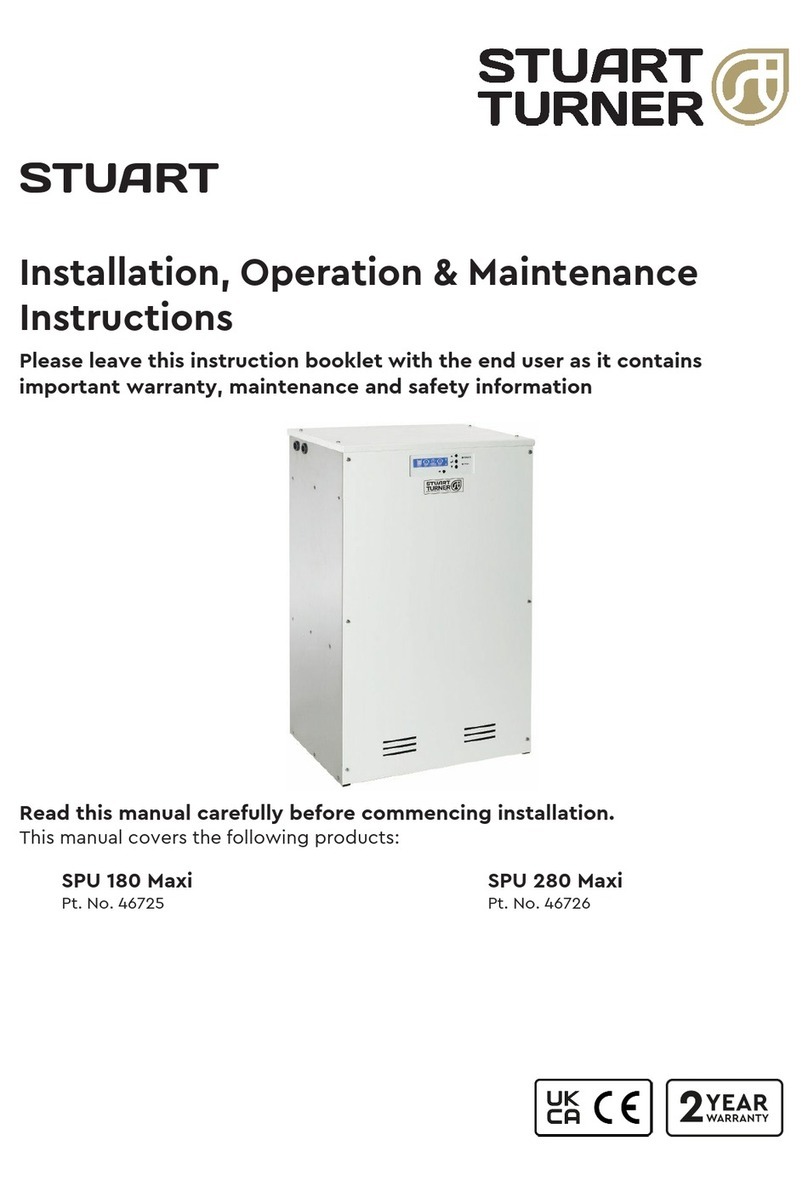
Stuart Turner
Stuart Turner SPU 180 Maxi Installation, operation & maintenance instructions
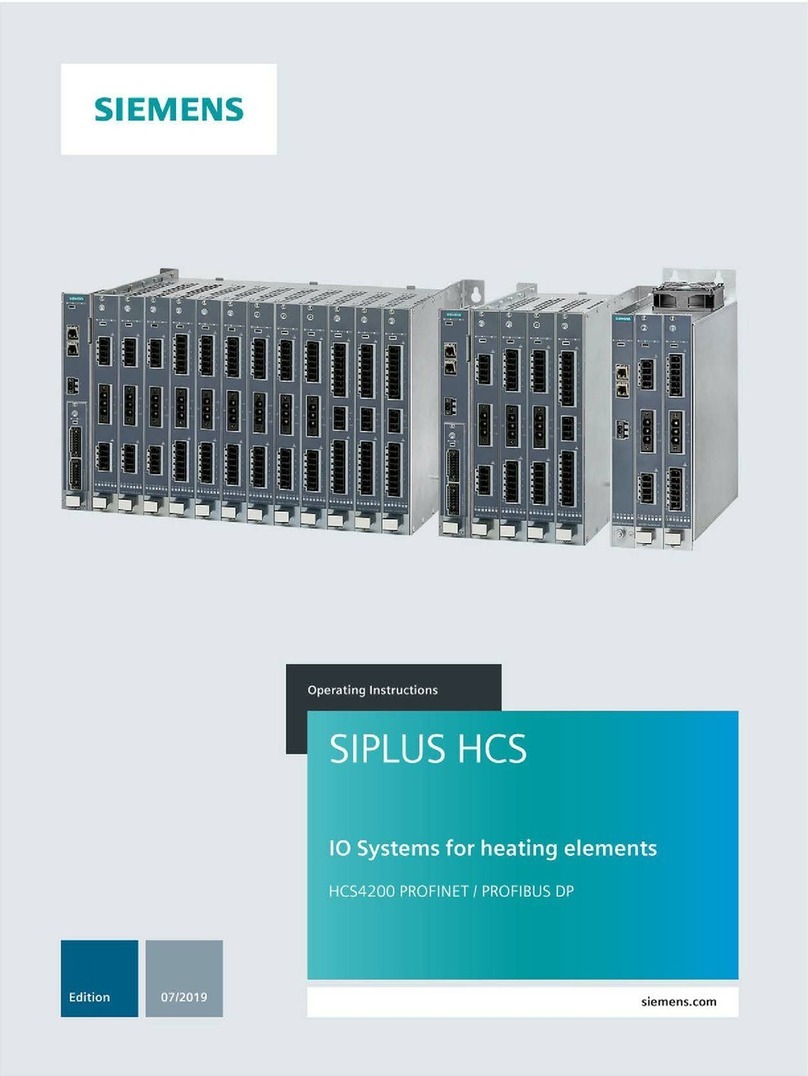
Siemens
Siemens SIPLUS HCS Series operating instructions
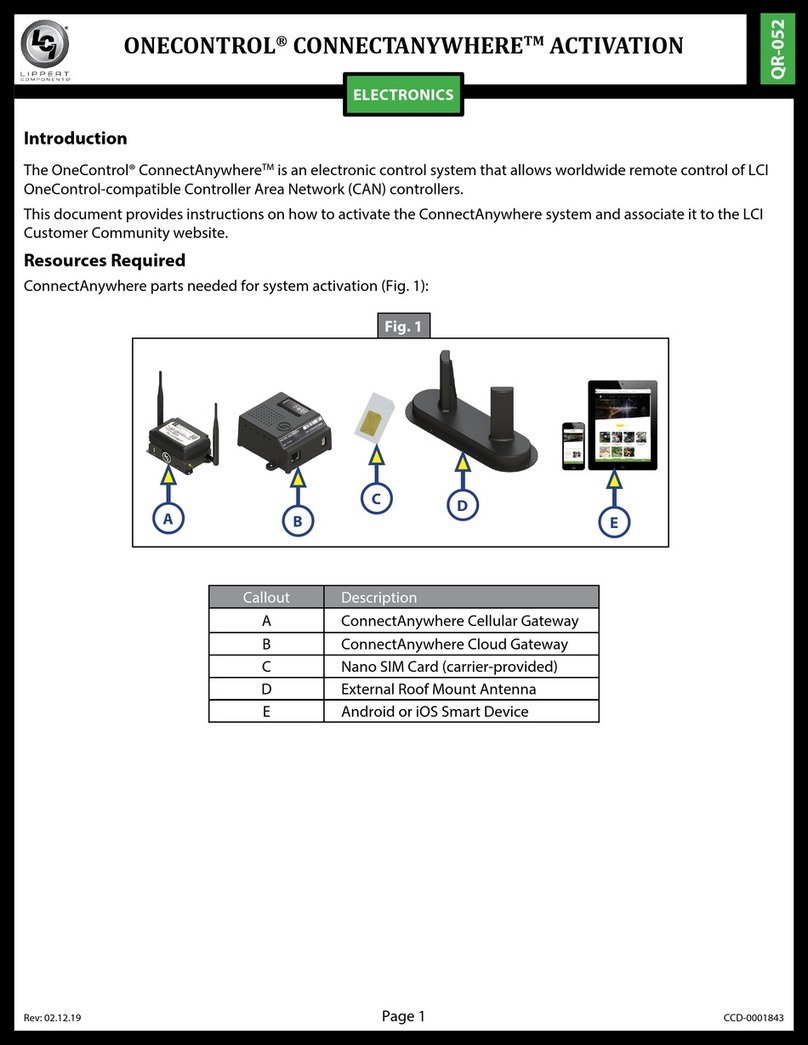
Lippert Components
Lippert Components OneControl ConnectAnywhere manual

MIFRAM SECURITY
MIFRAM SECURITY MVB-3X Assembly instructions

AirBench
AirBench Vertex VP Operation and maintenance
